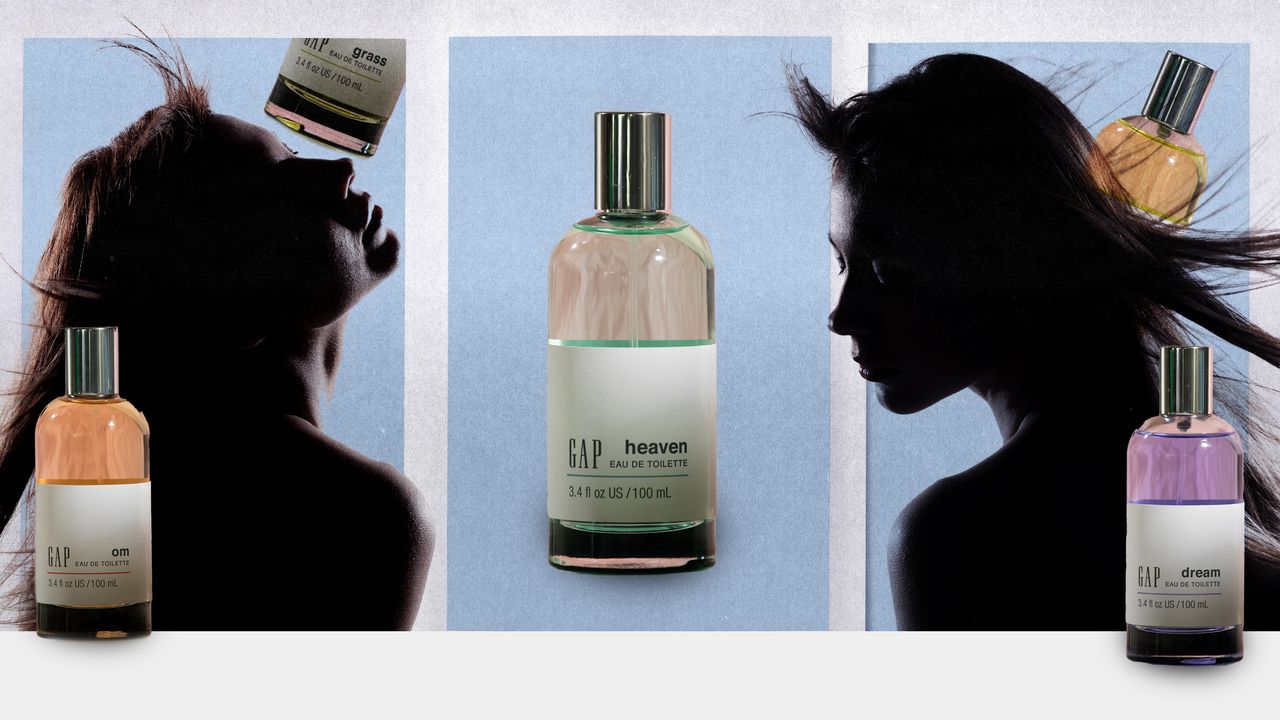One sniff of Gap Dream brings me back to my childhood bedroom. It’s 1996, and I’m poring over the latest issue of Tiger Beat magazine with my best friend Diana, debating which floppy-haired teen dream we want to marry. (Hi, JTT!) For those of you who, like me, have been holding onto your Dream fragrances for more than 20 years—occasionally spritzing those frosted bottles for a trip down memory lane—you’ll be thrilled to know you can officially retire your old stock. All of the ’90s Gap perfumes are available for purchase once again.
But before we get into where I found a brand-new set of these nostalgia-inducing fragrances, let’s talk about why these perfumes were such a big deal three decades ago. In November 1994, apparel brand Gap expanded into the beauty realm with the rollout of its Grass, Day, Earth, and Heaven scents. While Grass, Day, and Earth embodied the meaning of unisex, Heaven was a light floral that leaned toward the traditionally feminine. Heaven, in particular, was a top seller for the brand, until Dream—a scent inspired by the idea of walking into a flower shop—joined the Gap fragrance family in August 1995.
“We were going to name it Flower, but when I started saying the word ‘flower,’ it was very flat,” Gary McNatton, Gap’s former VP of personal care and design development, told WWD at the time of the Dream launch. In addition to the fragrance’s transparent floral composition, the periwinkle-blue liquid was a departure for the brand; McNatton also told WWD that the launch was “the most important thing we’ve done for Gap scents.” I agree.
Then, riding the wave of the grunge movement, Gap launched Om in 1996 as a unisex scent. According to The San Francisco Chronicle, marketing for the fragrance was focused on the youth demographic, with scented bracelets distributed at rock concerts and on college campuses. “They matched the tone of the decade. The ’90s stripped things back—fashion was minimal, interiors became clean, and beauty leaned toward softness,” says Romy Kowalewski, perfumer and founder of 27 87. “Gap understood that shift. Their fragrances were simple and felt familiar the moment you smelled them. They made perfume feel accessible, and you didn’t need to belong to a certain world to wear them.”

